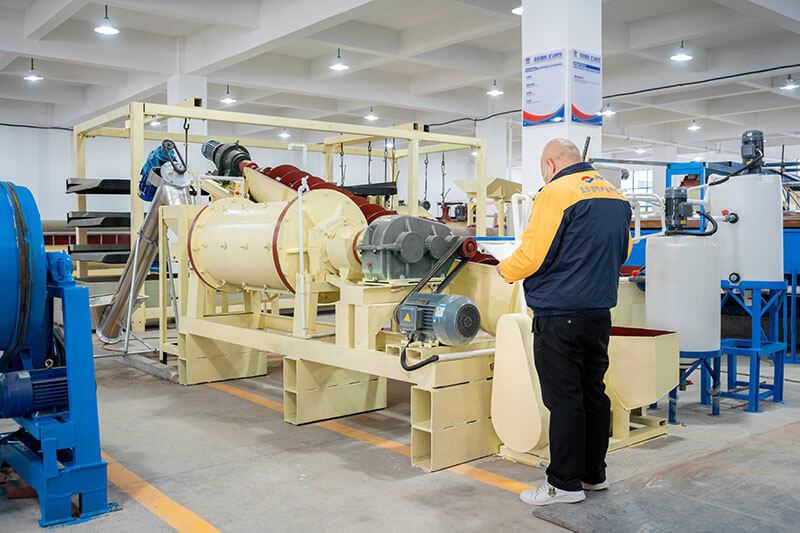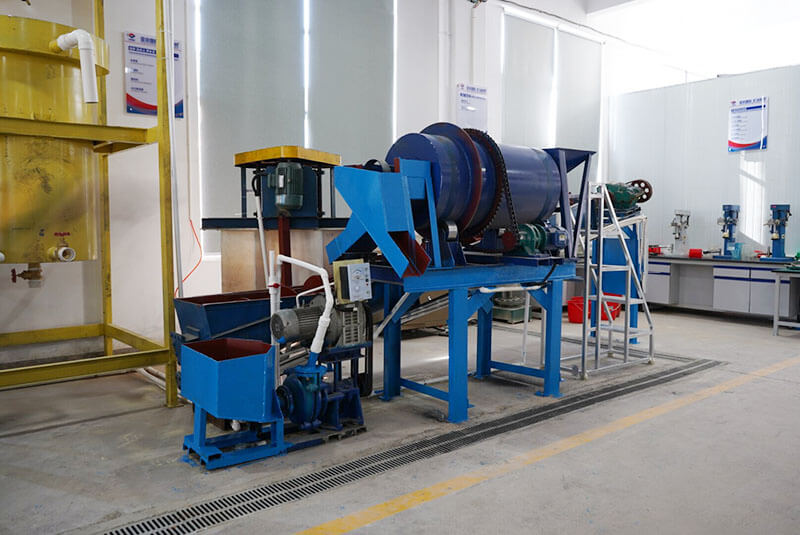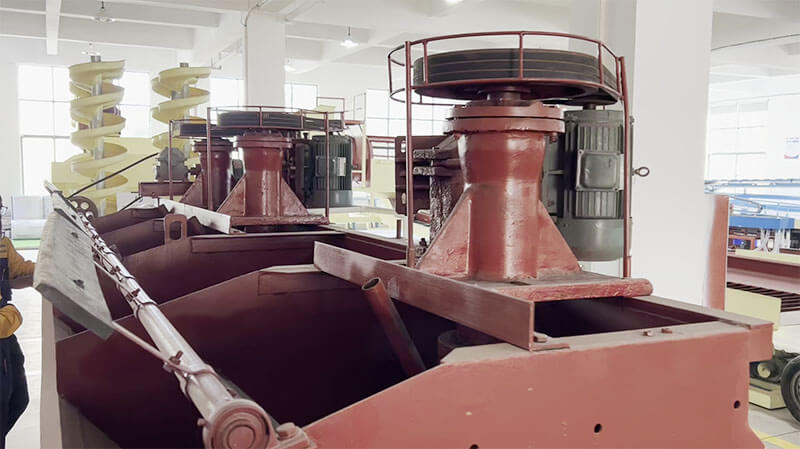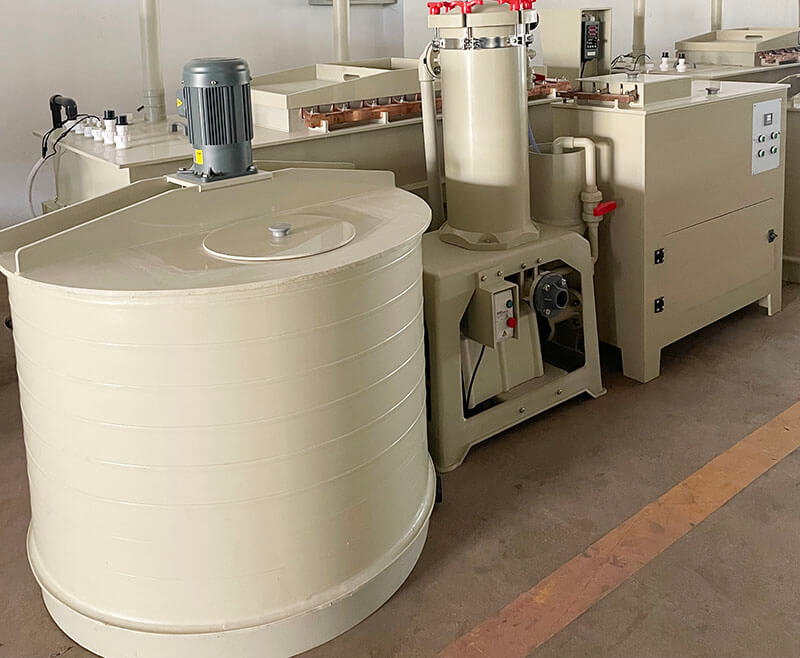Lab magnetic separator tube, also known as Davis tube. It is suitable for laboratories in coal preparation, mining, metallurgy, geology, and other fields. This machine is used to determine the magnetic component content of strong-magnetic ores and provide reference data for ore sorting. It is a device for inspecting these ores during the separation process.
Lab Magnetic Tube
Working principle
The magnetic separation tube has a glass tube between the forming electromagnets, which moves back and forth. When the sample material passes through the magnetic field area, magnetic substances adhere to the pipe wall, and wash non-magnetic substances away by water during mechanical motion and discharge.
Lab Magnetic Tube has the following characteristics
- Easy to operate: The operation of the lab magnetic tube is relatively simple. Add the material into the tube, start the machine and generate magnetic field, and achieve separation.
- Efficient separation: The magnetic field strength of the magnetic tube is high, which can quickly separate magnetic substances from non-magnetic substances and improve separation efficiency.
- High precision: The magnetic separation tube has high precision and can achieve fine sorting of substances with different magnetic properties, such as distinguishing between strong magnetic, medium magnetic, and weak magnetic substances.
- Wide application: Magnetic separation tubes are suitable for separating various minerals, such as iron ore, manganese ore, tungsten ore, tin ore, etc.
- Small footprint: The magnetic separation tube has a small volume and occupies a small area, making it easy to install and move.
- Easy maintenance: The magnetic separation tube has a simple structure, is easy to maintain, and has a long service life.
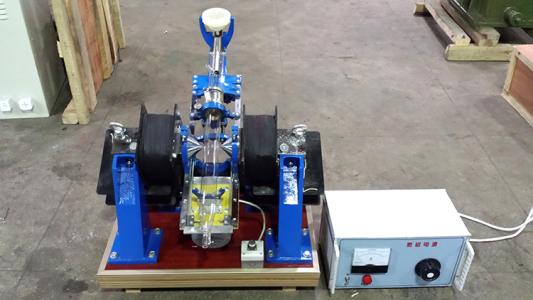
Structure Introduction
The magnetic separation tube includes a main engine and an excitation power supply. It usually work with mining lab crusher, gravity separation equipment, grinding machine for beneficiation testing.
- The bracket on the chassis is a C-type iron core support for excitation winding. The ring clamp at the magnetic pole end of the iron core to support the bracket. The glass tube is embedded in a circular ring and lays between the magnetic poles through a carriage. The motor goes through a reduction mechanism and uses a crank to make it sway.
- The glass tube device should form an angle of 0 ° -40 ° with the horizontal line. The reciprocating stroke of the tube is 40 millimeters, with a swing of 45 degrees. The upper end of the tube is open, from which the sample is given. Lower part of the tube is sharp and thin, and a rubber tube with a clamp can be used to cover its sharp part. The clamp is suitable for adjusting the water outflow, and the flushing water flow is injected from the upper branch of the glass tube.
Operating Procedures
Installation
- The main engine and excitation power supply of the magnetic separation tube only need to stay on a wooden machine base. Before use, peel off all packaging paper, wipe rust-proof oil clean, and check all fastening screws for looseness. After confirming that the mechanical operating parts and various welding points are in normal condition, then we can start the machine.
- Connect the excitation power supply and the excitation and motor power supply on the host to start the trial operation. When the input voltage is 220V ± 10V, adjust the excitation current to 4A. Connect the glass tube with a rubber hose to inject water, and connect the soft rubber tube to the branch pipe at the upper end of the glass tube. Fit a short and soft rubber tube into the pointed conical tube at the lower end of the glass, and install a clamp to adjust the flow rate of the flushing water.
Operation
- Pre-open the lower clamp to adjust water consumption and the upper clamp to adjust the amount of water for rinsing. Adjust both clamps to maintain the water level in the tube throughout the entire test process.
- Turn on the power supply, take a 5-10g sample (particle size is 0.5mm), and put it into the glass tube with full running water. Adjust the exciting current to reach the predetermined magnetic field strength to meet the requirements of mineral separation.
- During the movement of the tube, non-magnetic or weakly magnetic substances and impurity particles will continuously sink with the flushing water until they away from the tube. Strong-magnetic particles will adhere to the inner wall of the tube.
- The working magnetic field can completely separate all magnetic particles from non-magnetic particles. After rinsing the magnetic part (usually 5-10 minutes), close the two return clips, turn off the power, and discharge the magnetic substance.
Precautions
- The magnetic field strength is adjustable based on the content and strength of the magnetic material. If the content of the magnetic material is high, the magnetic strength of the magnetic material is high. The magnetic strength is generally between 150 million, and the sorting effect is better.
- When the magnetic content is low (for example, the magnetic content is only about 1%), the magnetic field strength should be appropriately increased and adjusted between 150-220 millitons. If the magnetic content is low and weak, the magnetic field strength will be high. To obtain accurate results, reuse the sample mixture until the magnetic content increases.
JXSC lab mineral processing equipment manufacturer has more than 38 years of experience in mining processing. We provide various lab mining equipment including gravity-separating equipment for processing minerals such as gold, tin, tungsten, lead, zinc, tantalum, niobium, iron, manganese, silver, titanium-iron, etc. Lab machines include laboratory jaw crusher, hammer crusher, roller crusher, grinding equipment, lab gravity separator, screening, washing equipment, etc. Welcome to consult!

